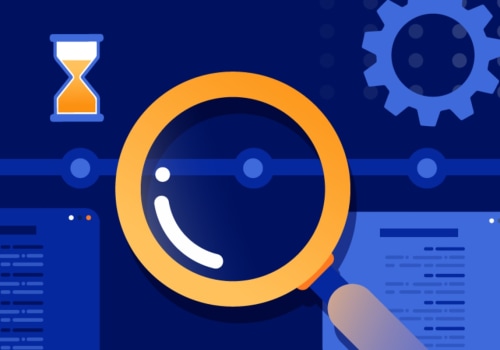In the age of technology, page loading speed has become an important factor in determining a website's success. As technology advances, visitors have come to expect faster loading times from websites, as well as better user experiences. Page loading speed affects how quickly visitors can access information, and how likely they are to stay on the page and complete their task. It also affects Google's ranking algorithms, which means that websites with faster loading speeds are more likely to appear higher up in search results.
In this article, we will explore the importance of page loading speed and what you need to know to ensure your website loads quickly and efficiently. Page loading speed is an important factor to consider when it comes to user experience and rankings on search engines. It affects how quickly your website loads and can determine whether a user stays on your website or not. There are several factors that can impact page loading speed, such as image size, server response time, code optimization, and more. Different browsers handle page loading speed differently, so it is important to take that into consideration when designing a website.
What is Page Loading Speed?Page loading speed is the amount of time it takes for a web page to fully load. It is measured in milliseconds and can have a huge impact on user experience. A slow loading website can lead to higher bounce rates and fewer conversions. On the other hand, a fast loading website can lead to increased engagement and higher rankings on search engines.
Factors That Affect Page Loading SpeedThere are several factors that can affect page loading speed, such as image size, server response time, code optimization, and more. Image size is an important factor, as larger images take longer to load. It is important to optimize images to ensure they are not unnecessarily large and are properly compressed. Server response time is another factor that affects page loading speed.
The faster the server responds, the quicker the page will load. Code optimization is also important, as poorly written code can slow down page loading speed. Minifying code can help to improve page loading speed by removing unnecessary characters and whitespace.
Different Browsers Handle Page Loading Speed Differently
Different browsers handle page loading speed differently.For example, Google Chrome may have a faster page loading speed than Mozilla Firefox. This is because each browser uses different algorithms to determine how quickly a page should load. It is important to take this into consideration when designing a website, as some browsers may have a slower page loading speed than others.
Tools for Measuring Page Loading Speed
There are several tools that can be used to measure page loading speed, such as Google PageSpeed Insights and WebPageTest.These tools can provide valuable insights into how quickly your website is loading and what areas need to be improved. The results of these tests can be used to identify areas where improvements can be made in order to optimize page loading speed.
Best Practices for Improving Page Loading Speed
There are several best practices for improving page loading speed, such as optimizing images, minifying code, leveraging browser caching, etc. Optimizing images can help reduce their size and improve page loading speed.Minifying code can help remove unnecessary characters and whitespace which can improve page loading speed. Leveraging browser caching can help store certain elements of a webpage so they don’t have to be downloaded every time the page is accessed. It is also important to keep page loading speed in mind when designing a website. Elements such as large images or poorly written code can slow down page loading speed and negatively impact user experience. Slow page loading speeds can lead to higher bounce rates and fewer conversions, while improved page loading speeds can lead to increased engagement and higher rankings on search engines.
Measuring Page Loading Speed
Page loading speed can be measured using a variety of tools.Google PageSpeed Insights is a popular choice, as it offers detailed insights into a website's performance and provides suggestions for improving page loading speed. WebPageTest is another useful tool, as it can provide detailed analysis of a website's performance, including the time it takes to load pages. Additionally, it can provide insights into how different browsers and devices affect page loading speed. Both of these tools are free and can be used to measure page loading speed quickly and effectively.
Factors That Affect Page Loading Speed
Image Size - Images are an important part of webpages, but they can also be a source of page loading delays.Images that are too large or have a file size that is too big can cause pages to load slowly. Optimizing image sizes and file sizes can help speed up your website.
Server Response Time
- The time it takes for your server to respond to requests is an important factor in page loading speed. If your server is slow or overloaded, your website will take longer to load. Improving your server's performance can help reduce page loading times.Code Optimization
- Poorly written or unoptimized code can also contribute to slower page loading speeds.Cleaning up code and optimizing it for performance can help your pages load faster.
The Benefits of Having a Fast Loading Website
Page loading speed is an important factor when it comes to user experience and rankings on search engines. Having a fast loading website can have a variety of positive effects for both the user and the website owner. For users, a fast loading website is more enjoyable to use. Pages that load quickly are less likely to cause frustration and more likely to keep people engaged on the website.Additionally, fast loading websites can help improve the overall user experience and make navigating the website easier. For website owners, having a fast loading website can lead to increased rankings on search engines. Search engines prioritize sites with faster loading speeds, which can lead to higher placement in search results. This can help increase traffic to the website and drive more customers.
Additionally, faster loading pages can help reduce the bounce rate, meaning that more people will stick around and explore the website. Overall, having a fast loading website is beneficial for both users and website owners. Faster loading pages can lead to increased engagement, higher rankings on search engines, and more customers for the website. Therefore, it is important for website owners to make sure their pages load quickly in order to maximize their potential.
What Is Page Loading Speed?
Page loading speed, also known as page load time, is the amount of time it takes for a website to fully display its content on a web page.It is an important factor in providing a good user experience and improving rankings on search engines. Page loading speed is measured in seconds and can affect how quickly a user can access your website, as well as how long they stay on it. Page loading speed is important because it affects how users interact with your website. A slow page loading speed can lead to users leaving your website before they even have a chance to explore its content. This can lead to a decrease in user engagement and website traffic, as well as a decrease in your rankings on search engines. There are several factors that can impact page loading speed, such as the size of your website, the server response time, and the number of requests made to the server.
Additionally, optimizing images, compressing files, and caching can help improve page loading speed. In conclusion, page loading speed is an important factor when it comes to user experience and rankings on search engines. Understanding why page loading speed is important, the factors that impact it, and how to improve it are key to providing a good user experience and achieving higher rankings on search engines.
Improving Page Loading Speed
Improving Page Loading Speed is essential for optimizing user experience and improving rankings on search engines. There are several best practices to improve page loading speed, such as optimizing images, minifying code, and leveraging browser caching. Optimizing images is one of the most effective ways to reduce page loading time.Images should be compressed to the appropriate size, and any unnecessary image data should be removed. Additionally, image formats should be chosen carefully, as certain formats will take longer to load than others. Minifying code is another effective way to reduce page loading time. This involves removing unnecessary spaces, line breaks, and code comments.
This reduces the amount of data that needs to be transferred, thus speeding up the loading process. Leveraging browser caching is also a useful technique for improving page loading speed. This involves storing static resources such as images and CSS files in the browser's cache, so they can be quickly retrieved when needed. This reduces the amount of data that needs to be downloaded each time a page is loaded. Overall, these best practices can help improve page loading speed and provide a better user experience.
Optimizing images, minifying code, and leveraging browser caching are just some of the techniques that can be used to improve page loading speed.
The Impact of Page Loading Speed on User Experience
Page loading speed is a crucial factor when it comes to user experience and search engine rankings. It affects how quickly your website loads and can determine whether users stay on your website or not. It is therefore important to keep page loading speed in mind when designing a website. When page loading speeds are slow, users can become frustrated and leave your site without taking any action. This could mean lost opportunities to convert visitors into customers.Additionally, slow page loading speeds can negatively affect your search engine rankings as search engines use page loading speed as a factor when ranking websites. Apart from affecting user experience, page loading speed also affects the overall performance of a website. When pages take too long to load, it can create a bad impression for the user, making them less likely to return. Furthermore, slow page loading speeds can also increase the cost of hosting your website as more resources are needed to deliver the content. Fortunately, there are a few ways to improve page loading speed. One of the most effective methods is to optimize your images for the web.
This includes compressing them and making sure they are in the correct format for web use. You can also minify your code and reduce the number of requests to the server by combining assets such as CSS and JavaScript files. Another way to improve page loading speed is to make sure your website is hosted on a reliable server that can handle the increased traffic. Additionally, you should enable caching so that content is stored on the user's device and loaded more quickly. Finally, you should take advantage of browser caching and CDNs (Content Delivery Networks) to deliver content faster. In conclusion, page loading speed is an important factor when it comes to user experience and rankings on search engines.
By optimizing images, minifying code, enabling caching, and using a reliable hosting provider, you can improve page loading speed and ensure a better user experience. In conclusion, page loading speed is an essential element to consider when developing a website for both user experience and search engine rankings. It is important to understand the factors that affect page loading speed, measure it regularly, and follow best practices for improving it. This will ensure that your website loads quickly and provides an enjoyable experience for your users.






